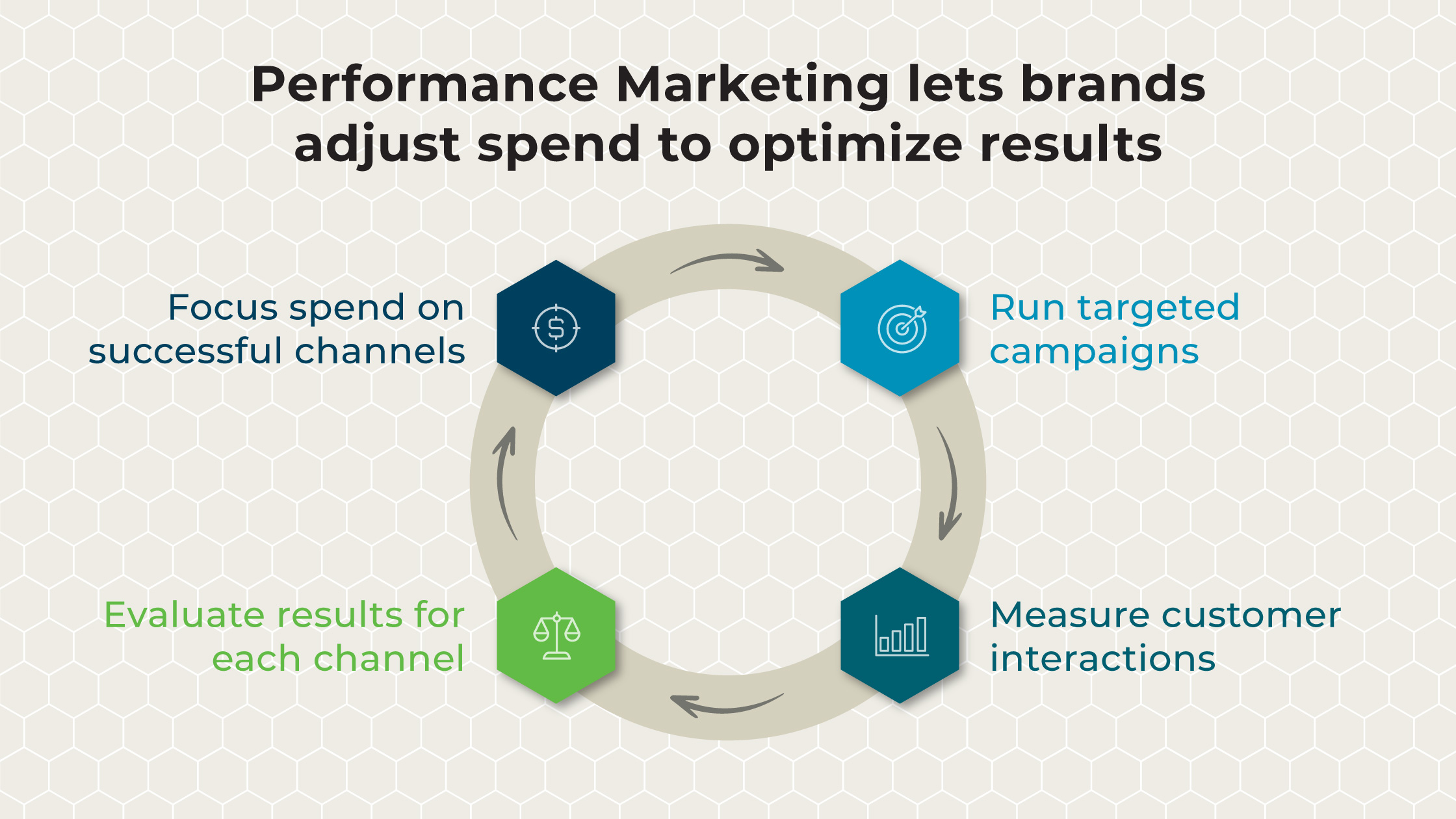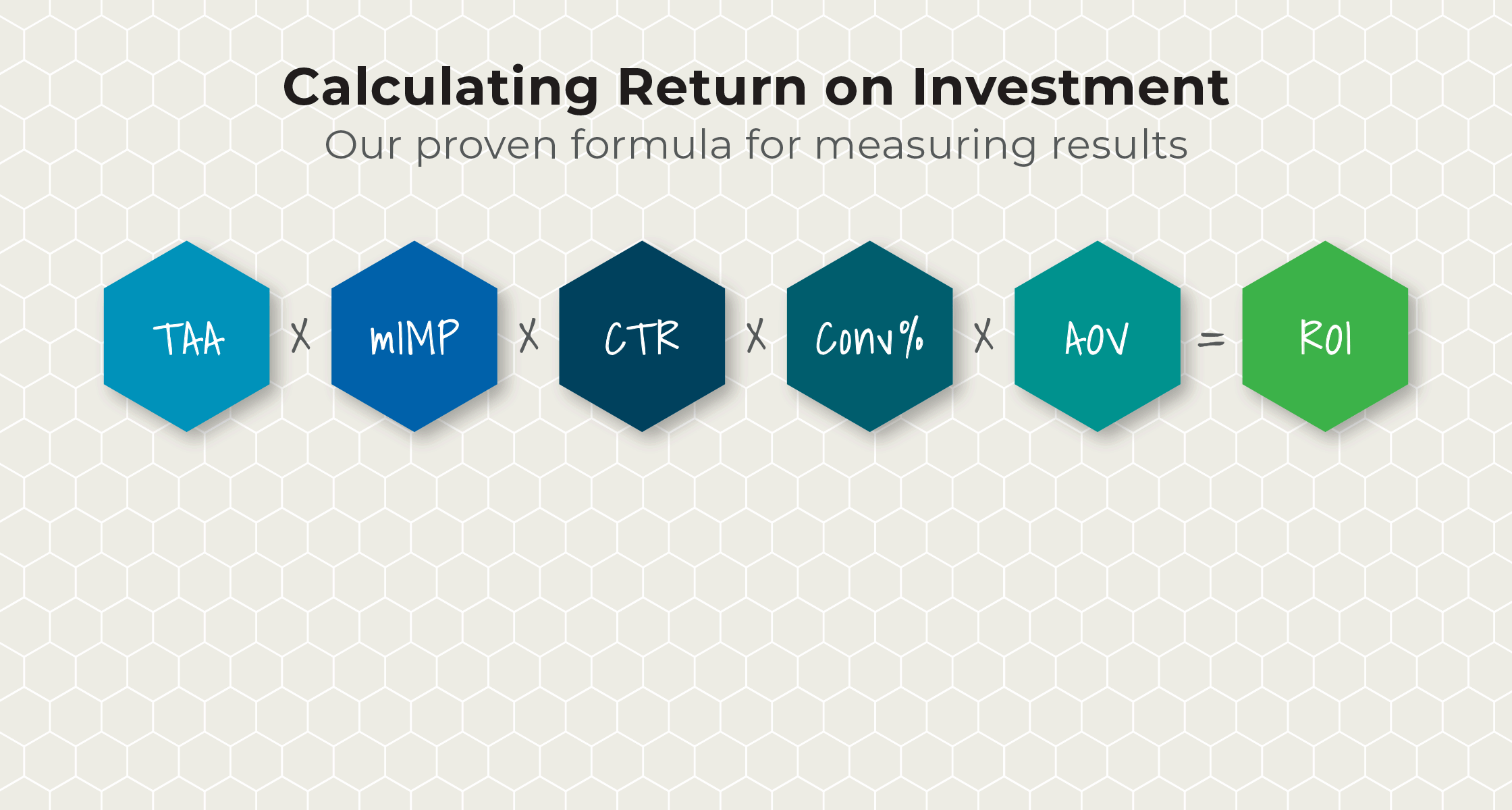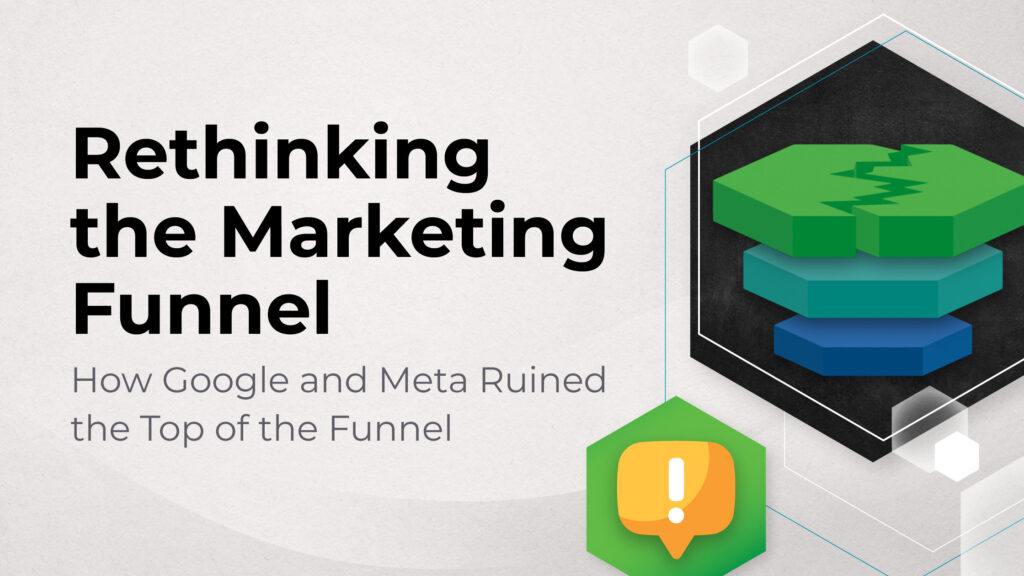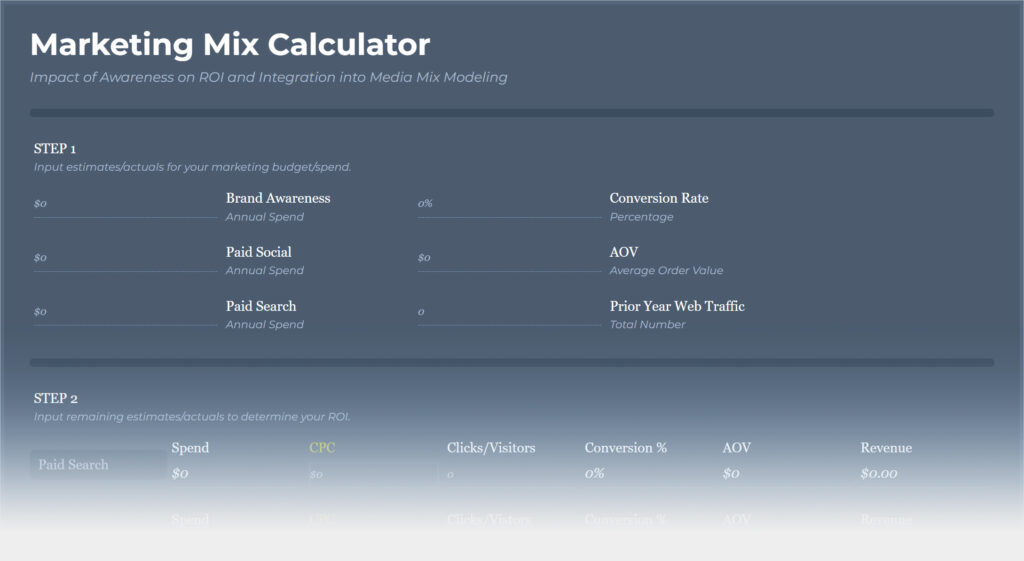
You might be surprised to learn that 8th grade algebra comes in mighty handy when evaluating your digital marketing strategy and determining data-verified improvements for your sales and marketing teams.
If pivoting to manage your budget and team in this way requires a big step change, no worries. We’ve been dancing this dance for over a decade, so we’ve got you.
Keep reading for simple guidelines on using marketing math to generate the powerful performance insights your brand needs. Below, we’ll cover:
- What is marketing math?
- What is performance marketing?
- The importance of marketing math in performance marketing
- Calculating return on investment (ROI)
- Analyzing cost per click and cost per acquisition
- Customer lifetime value (LTV)
- Predicting revenue growth using algebraic equations
- Marketing math tools
What is marketing math?
Thankfully, the answer has nothing to do with calculus, geometry, or any other rocket science.
Marketing math uses basic algebraic equations to calculate the effectiveness of your marketing campaigns.
Apply straightforward addition, multiplication, subtraction, and division to key metrics like cost per click (CPC), cost per acquisition (CPA), and cost of goods, and you’ll get actionable insights to grow your bottom line.
We’re about to show you exactly how but first, let’s clarify our context a bit more.
What is performance marketing?
Performance marketing, aka performance-based marketing, refers to digital marketing campaigns that modify spend based on how the customer interacts with each channel.
For instance, this might be in the form of cost per click or paying only for the number of leads generated.

In performance marketing, brands pay based on results.
Performance marketing lets brands target specific demographics or already interested parties, rather than broadcasting an expensive message to the entire world and wishing upon a star that someone responds.
This is a highly efficient and data-driven way of acquiring new customers.
Performance marketing channels include, but aren’t limited to, social media (Google, Facebook, Instagram, and so on), digital/streaming radio, connected TV, websites, and digital and mobile banner ads.
The importance of marketing math in performance marketing
Performance marketing is a numbers game that can only be played with marketing math.
Based on your goals, marketing math lets you:
- Understand where to put your marketing spend to best effect and build the right budget.
- Reliably predict ROI
- Unlock middle and lower funnel optimization insights by analyzing awareness (upper funnel) results, and vice versa.
- Get clarity on key metrics (total addressable audience, CTR, sales revenue, customer lifetime value, etc) and reverse the equation to identify opportunities when you tweak the numbers.
Marketing math is a great way to use the logic-driven thinking on the left side of your brain to inform the creative ideas on the right side.
Calculating return on investment (ROI)
Performance marketing is a relatively simple equation to solve if you’re tracking the right marketing metrics.
Here’s our tried and proven marketing math formula:

If the above mostly looks like gobbledygook to you, don’t run for the hills just yet.
Not everyone on our team is a mathlete (many, but not all) so we have lots of experience breaking it all down.
Let’s use a simple example based on an awareness marketing campaign, which should account for approximately 50% of your total budget.
Here’s a breakdown of the six components of the formula:
Step 1: Total Addressable Audience (TAA)
If your total addressable audience is 1,000 people and you show them five messages, that’s 5,000 impressions.
Step 2: Maximum Awareness (mIMP)
We know that awareness campaigns require between 5-8 impressions per week across channels, so that’s generally steady.
Step 3: Click-Through Rate (CTR)
It’s reasonable to count on at least a 1% CTR. That would be 50 people visiting your site as a result of the 5,000 impressions generated in step 1.
Step 4: Conversion Rate (CONV%)
If the conversion rate is 2% (a common average, yet on the lower side), you will convert one person among those 50.
Step 5: Average Order Value and Lifetime Value (AOV/LTV)
Let’s say AOV is $100, which then makes revenue $100.
Step 6: Return on Investment (ROI)
Subtract what you spent (total marketing costs – not just Paid Media spend) in order to make that $100, and the resulting number is your marketing ROI.
Check out one of our capstone blog posts. Be prepared for a whole new perspective on your marketing funnel.
And before you ask about analyzing cost per click (CPC) and cost per acquisition (CPA)…
You know what a nothing burger is, right? That’s how we feel about cost per click.
CPC is heavily influenced by marketplace activity and competitor bids. Its relation to your overall success depends on what’s going on with some of the bigger numbers in the equation—especially how narrowly you’re targeting your audience and your conversion rate.
When single metrics (like cost per click) are looked at independently, with minimal contextual considerations, brands can arrive at conclusions that are way off the mark.
Conversely, cost per acquisition (CPA) is an incredibly important metric.
CPA tells you the cost of acquiring a customer. This number, together with total marketing costs, is essential for calculating your ROI. Knowing the customer acquisition cost tells you how well your campaigns are working.
- Are you getting the highest number of new customers?
- Is your revenue investment going into the right channels?
Customer Lifetime Value (LTV)
The best customers are repeat customers. Customer loyalty is like a long marriage: with hard work, it can offer years of a mutually-beneficial relationship.
But how much can you expect to make out of the relationship, exactly? Marketing math says it’s less about romance and roses, and more about:

Once you know the LTV of your average customer, you can see whether you’re spending too much (or in some cases, too little) and adjust your budget and strategy accordingly.
Predicting revenue growth using algebraic equations
Our Client Strategists rely on marketing math to:
- Determine profitability
- Assess the effectiveness of marketing campaigns
- Identify opportunities to tweak those campaigns for maximum success.
Algebraic equations are the foundation of every budget and revenue forecast we create. Always.
Marketing math tools

Our Apiary math whizzes created a simple-to-use ROI Calculator that’s embedded with impressions benchmarks, click-through rates based on each channel, conversion percentages, and more.
Plug in the numbers from your last campaign and see the potential bottom line impact if this or that number is adjusted.
Whether your goal is predicting revenue growth or finding ways to improve campaign strategy, this calculator should really be your new best friend.
Instead of marketing guesswork or reliance on isolated metrics, all you need is 8th grade algebra.
The ROI-Based Marketing Budget
Let our Marketing ROI Calculator give you a reliable performance forecast to map your strategy to.
TL;DR on Marketing Math
- Marketing math uses 8th grade algebra to measure performance marketing effectiveness and inform strategy optimizations.
- Calculating ROI is as simple as TAA x mIMP x CTR x Conv% x AOV = $Rev/$SP = ROI.
- Experimenting with formula inputs is a great way to see the impact of changes.
- Use our ROI calculator to help you measure success and test your strategic thinking.






